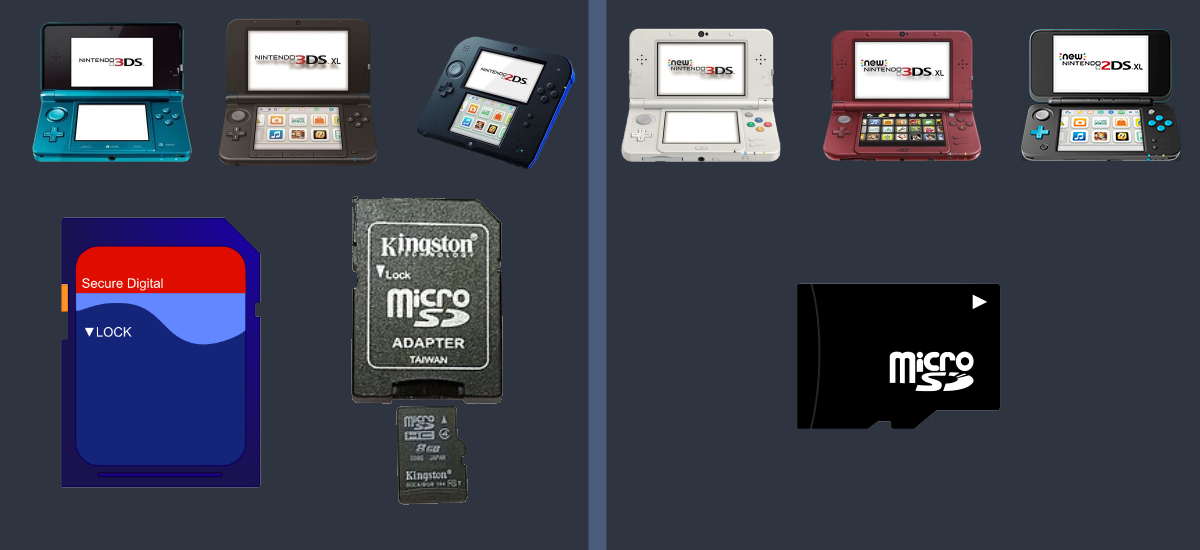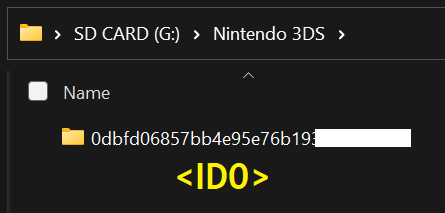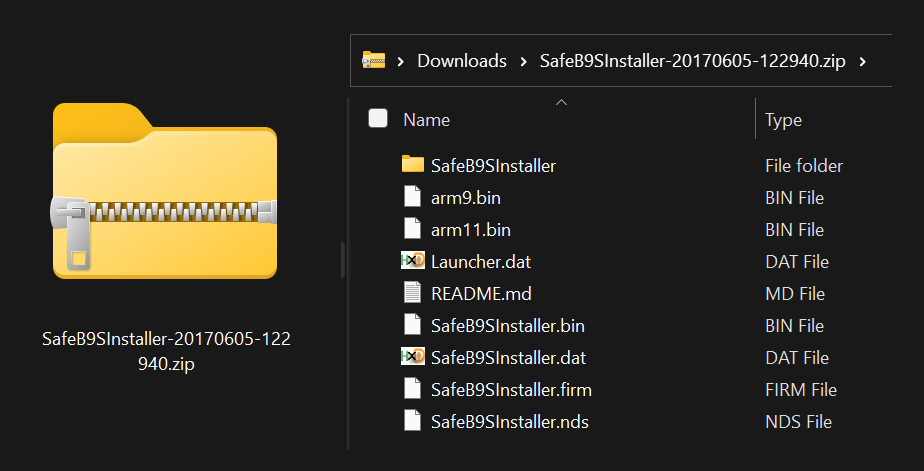Key Information
The latest 3DS firmware is 11.17.0. 以下是一些你应该知道的事情:
- 如果你的主机正在使用的 Luma 版本为 10.2.1 及以上的,那么升级系统是 100% 安全的。 你可以在关机状态下按住 SELECT 键,然后按下电源键开机以检查主机的 Luma 版本。
- 如果你的主机运行的 Luma 低于此版本,则你应该在更新系统到 11.17.0 前先更新 Luma。
- If your console does not yet have custom firmware, you can install it now on all firmwares with this guide.
如果你是第一次破解 3DS(或你不熟悉电脑的技术活)的话,请继续阅读! 如果你已经是一个老手了,请直接到开始部分继续你的操作。
这些页面包含一些在进行本教程之前基础的且你应该知道的计算机术语,以及3DS的有关资料。
下面的每个章节默认为折叠状态。 点击章节的名字可以展开它。
Things you should know about the 3DS
3DS/2DS compatibility

This guide works with every retail console in the Nintendo 3DS family of consoles (including the 3DS, 3DS XL/LL, 2DS, New 3DS, New 3DS XL/LL, and New 2DS XL/LL), regardless of region or firmware.
Computer compatibility

In most cases, you can follow this guide as long as you are able to download files from the Internet and copy them to your SD card. Depending on your computer/phone/electronic device, you may need to purchase a USB to SD card adapter to allow your computer to read your SD card.
SD card location, type, and capacity

The location of the SD card slot and the type of SD card that is accepted depends on the model of your 3DS. More information can be found on Nintendo’s official support page.
The 3DS can read SD cards of any capacity (even those larger than 32GB), but the card must be formatted as FAT32 (not exFAT or NTFS). You can use one of the following tools to format your SD card, depending on your operating system: Windows, macOS, Linux. SD cards larger than 128GB are not recommended due to known issues with custom themes and GBA/DS graphics.
To follow this guide, you’ll need an SD card with a capacity of at least 2GB.
If you want, you can check your SD card for errors before following this guide using H2testw (Windows), F3 (Linux), or F3XSwift (Mac)
Potential risks (Disclaimer)
By modding your console, you subject it to the remote (but non-zero) possibility of the console being banned from online play or bricked (rendered non-functional). Incorrect file placement will NOT brick your console, but purposely skipping instructions might. Similarly, the last ban wave occurred over five years ago, but there is no guarantee that another one will not occur in the future.
In short: Modding your console is safe, but it’s your responsibility if something goes wrong.
Things you need to do on your computer
Following this guide alone should not result in data loss, but SD card corruption is always a possibility. You should make a backup of your SD card contents (especially the Nintendo 3DS folder) if you have important data.
File placement terminology (e.g. "root of SD", "/luma/")

When copying files to the SD card, it is important to copy them to the right location - otherwise, the console will not detect the file and the exploit or software you are trying to use will not work. A term you will see frequently on this guide is root of the SD card, which means you are not inside any folder on your SD card. The directory that appears when you first open your SD card on your computer is called the ‘root’.
You may also see folder names indicated like this: /folder/. The slashes are used to indicate directories and are not part of the name of the folder. For example, /folder1/folder2/ would refer to folder2 inside of folder1:

Angle brackets (< and >) are also occasionally used to refer to system-specific identifiers. For example, if the guide says <ID0>, it is referring to the system-specific identifier inside of the Nintendo 3DS folder, rather than a folder literally named “ID0”:

Downloading files from GitHub

In this guide, you will copy files that are downloaded on your computer/phone to your console’s SD card. Many of these files come from GitHub, which is a website used by developers to publish their open-source releases. When downloading files from GitHub, you should download the file that isn’t source code.
Opening/extracting files

Some of the files that you will be asked to download come in the .zip file format, which is used to package multiple files into one file.
When you are told to “copy (file) from (file).zip”, that means that you need to open (or “extract”) the ZIP file. Inside the ZIP file will be the file you’re looking for, after which you can copy it to the specified location on your SD card.
On most operating systems, you can extract files by double-clicking the file. If this doesn’t work, you can install a reputable third-party extraction tool like 7-zip instead.
(Windows only) File extensions

If your computer is running Windows, file extensions may be hidden by default, which may make it harder to find the files you’re looking for. To enable file extensions, follow these instructions.
Getting help
If you experience an issue while following this guide, there are many ways that you can get help!
- If you have any questions that haven’t been answered on this page, their answers might be in the Pre-Installation FAQ.
- If you experience an issue while following this guide, you can check the Troubleshooting page for a solution.
- If the resources we’ve provided here aren’t helping, you can get one-on-one support over at Nintendo Homebrew on Discord.
Continue to Get Started